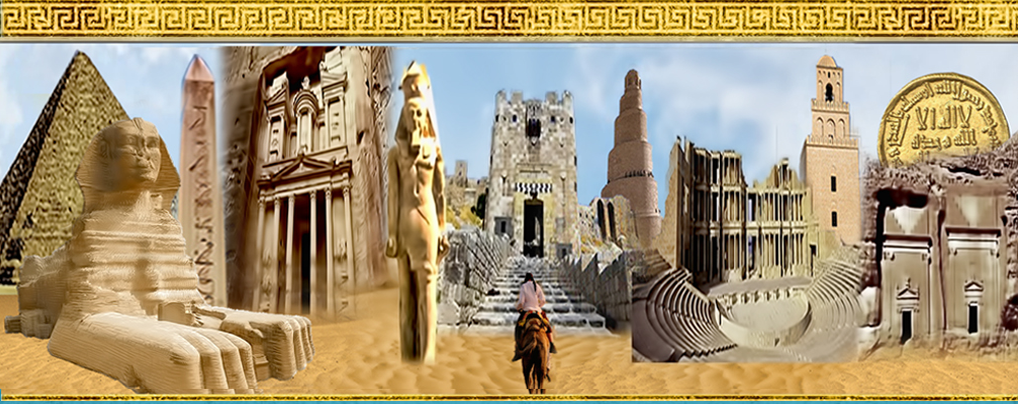Journal of the General Union of Arab Archaeologists

Abstract
[Ar]
ترميم وصيانة سجادة آثرية فريدة من متحف قصر الأمير محمد على بالمنيل– القاهرة (دراسة حالة)
يمثل السجاد التاريخى أحد أكثر الكنوز الفنية التى يجب الحفاظ عليها للأجيال القادمة. لذلك تقدم هذه الورقة البحثية استراتيجيات علمية لصيانة سجادة آثرية فريدة حُفِظت فى ظروف تخزين غير متحكم فيها. السجادة غنية بالزخارف وتعود إلى العصر الحديث (القرن 13هـ/ 19م). وكانت مُخزنة فى متحف قصر الأمير محمد على بالمنيل (القاهرة) تحت رقم 90/112سجل 2. ونظرا للتلف الشديد الذى كانت تعانى منه هذه السجادة كان لابد من وضع خطة علاج مناسبة لترميمها بشكل صحيح وذلك باستخدام التقنيات الميكروسكوبية والطيفية. فقد تم استخدام التحليل الطيفى بالأشعة تحت الحمراء [FTIR] لتحديد أنواع الأصباغ، فى حين تم استخدام حيود الأشعة السينية [XRD] لتحديد المرسخات. كما تم استخدام المجهر البصرى والمجهر الإلكترونى الماسح [SEM] لتحديد نوع الألياف وحالتها وشكلها المورفولوجى. واستخدم برنامج الأوتوكاد [AutoCAD] لتوثيق السجادة بالكامل بما تحمله من زخارف ومظاهر تلف. وقد أكدت النتائج أن الخيوط المستخدمة فى السجادة هى ألياف صوفية، الألياف تعانى من جفاف شديد وتقصف وهشاشية، أيضا احتواء الألياف على شقوق عرضية وترسيبات سميكة على السطح. علاوة على ذلك، تم العثور على أصباغ الفوة، النيلة الزرقاء، والبليحة. وكانت المرسخات المستخدمة هى الشبة، ثانى كرومات البوتاسيوم، وكبريتات الحديدوز. وكان عامل التلف الأتربة بجانب العوامل الفيزيائية الأخرى. وتم معالجة السجادة الآثرية بإزالة أعمال الترميم القديمة الخاطئة، ترطيب الألياف، محاولات للتنظيف الجاف، الغسيل، التجفيف، التقوية عن طريق التثبيت على حامل كتاني جديد تم شده على إطار خشبى (وفقاً لمتطلبات السلامة)، وأخيراً التعقيم بالفضة النانوية.
[En]
Historical carpets represent one of the most artistic treasures, which ought to be saved for the next generations. Therefore, this paper presents scientific strategies to conserve a unique archaeological carpet, which was kept under uncontrolled storage conditions. The carpet is highly decorated and dates back to the modern era, 13th AH/19th AD. It was stored in Prince Muhammad Ali Palace Museum in El-Manial (Cairo) under Nrº.90/112 Record 2. As this carpet suffered from severe damage, an appropriate plan had to be drawn up to restore it properly using microscopic and spectroscopic techniques. Fourier Transform Infra-Red (FTIR) spectroscopy was used to identify the kinds of dyes, while X-ray diffraction (XRD) was used to identify mordants. Optical microscope and Scanning Electron Microscopy (SEM) were used to identify the type of fibers, their condition, and surface morphology. The AutoCAD program was used to document the whole carpet with all its decorations and aspects of damage. The obtained results confirmed that the threads used in the carpet are wool fibers; the fibers suffer from severe dehydration, brittleness, and fragility; also, the fibers have cross-slits and thick deposits on the surface. Moreover, the presence of Madder, Indigo, and weld dyes were found. The mordants used were alum, potassium dichromate, and ferrous sulfate. The deterioration factor was dust alongside the other physical factors.
The treatment of the archaeological carpet was performed by removing old erroneous restoration works, moisturizing fibers, attempts to dry cleaning, washing, drying, consolidating by fixing on a new linen fabric supporter which was stretched on a wooden frame (according to the safety requirements), and finally sterilizing by nano-silver.
Recommended Citation
Samy, Mariam Ghattas; Mahgoub, Gamal; Osman, Eman; and Kamal, Neven
(2022)
"RESTORATION AND CONSERVATION OF A UNIQUE ARCHAEOLOGICAL CARPET FROM PRINCE MUHAMMAD CALI PALACE MUSEUM IN AL-MANIAL, CAIRO (CASE STUDY),"
Journal of the General Union of Arab Archaeologists: Vol. 7:
Iss.
1, Article 11.
Available at:
https://digitalcommons.aaru.edu.jo/jguaa/vol7/iss1/11

